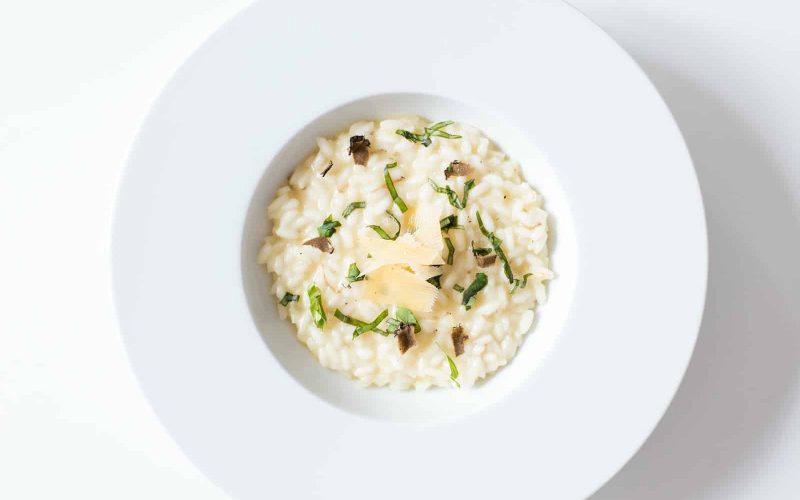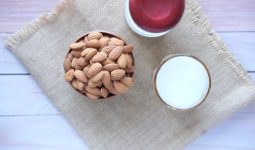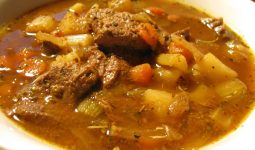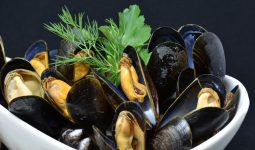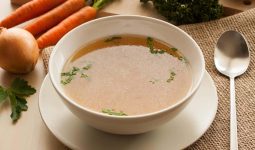Listing all the white foods can be challenging because there are so many different kinds of food worldwide.
These colors result from the organic substances they naturally contain, which assist our bodies in various ways.
According to a study by the prestigious Wageningen University in the Netherlands, chemicals like flavins are responsible for the color and qualities of foods with white flesh. Flavins have a variety of health advantages.
Potassium, which possesses antibacterial, expectorant, and diuretic characteristics, is also abundant in white foods.
Another vitamin is calcium, which keeps our bones and teeth healthy and lowers blood pressure.
The elements phosphorus and magnesium, which control the function of the heart, are present in white meals at a healthy level. These nutrients all aid the body’s process of cell regeneration.
By regulating blood sugar and triglyceride levels, they safeguard the cardiovascular system.
They also reduce inflammation and infections and strengthen the immune system. Without further ado, here are some of the white foods.
1. White Bread
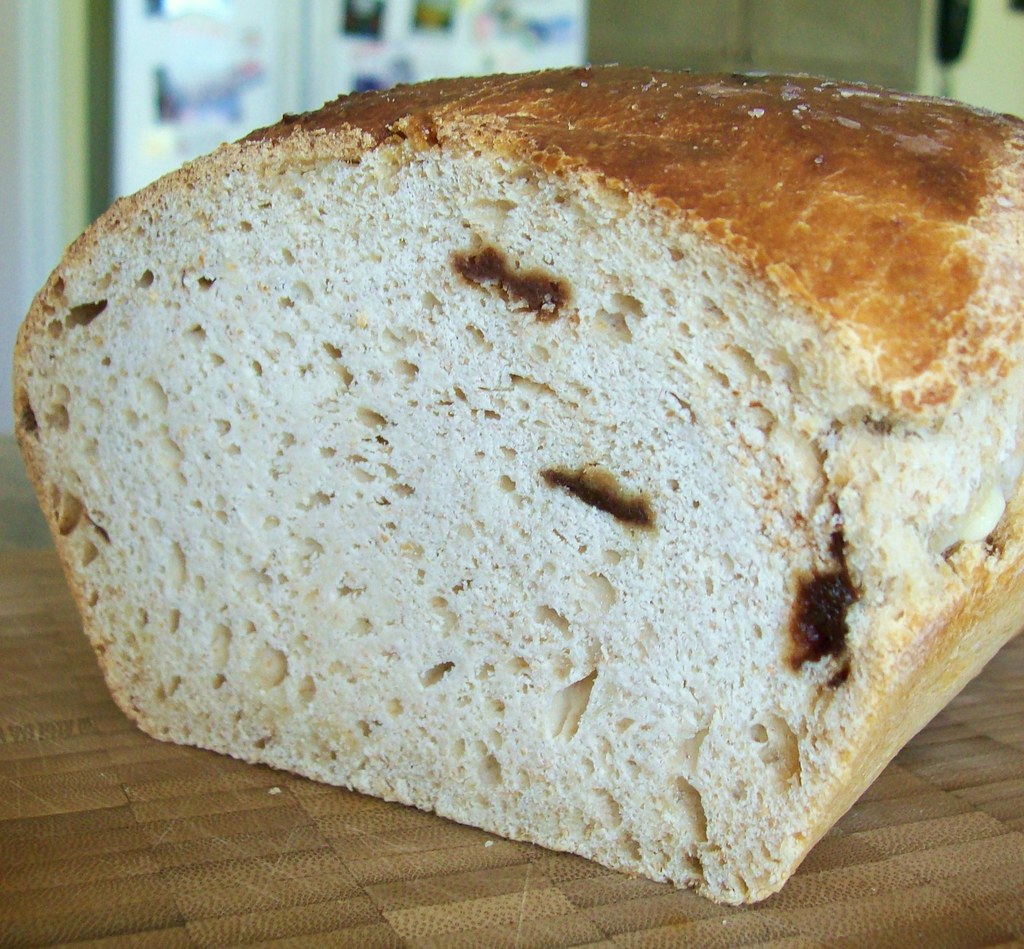
It is bread created from wheat flour during milling or grinding. It is also known as sandwich bread or loaf in the United States. Brown bread is healthier than white bread, though.
White bread also contains a few unhealthful and nutritionally deficient substances. Since it is fluffier and softer, it can be baked quickly and is simple to consume. White bread contains calcium, fiber, protein, iron, vitamins, fat, and sugar.
2. Almonds
Almonds are one of the white foods. They are a kind of nut that originates from West Asia and is the fruit of the almond tree. Almonds have a dark exterior and are shaped like an oval with pointy ends. However, they have a white inside.
Also, Almonds are a rich source of protein, fiber, and good fats. You can cook with them, eat them raw, or roast them (both sweet and savory).
3. Bananas
Bananas are excellent for decreasing blood pressure, even though their high potassium content is perhaps their most well-known quality.
This quality helps to prevent cardiovascular harm quite well. They have vitamin B6 and are anti-inflammatory.
Recent studies have found that bananas are also excellent for reducing stress and anxiety. Furthermore, there are numerous methods for eating bananas. They are also used in baking and frying, making fantastic smoothies.
Additionally, they taste amazing when added as a garnish to desserts or oatmeal in the morning. Ripe bananas can be kept in the fridge. Though the fruit’s skins may deteriorate, they will still be edible and stay alive longer.
Otherwise, keep it in a fantastic, shaded location. Avoid leaving unripe bananas too close to other fruits, which accelerates ripening. Banana is one of the white foods
4. Almond Milk
Almond milk, a plant-based beverage prepared from almonds with a watery consistency and nutty flavor, was first drunk in Southern Europe more than a thousand years ago.
Almond milk is also lactose—and cholesterol-free and low in saturated fat. It contains significant amounts of vitamin E.
It has a richer nutritional profile and contains potassium, vitamin A, vitamin D, magnesium, and calcium. This is one of the best white foods.
5. Cauliflower
One cup of cauliflower provides nearly the recommended daily allowance of vitamin C, an antioxidant that strengthens the immune system, lessens inflammation, and may lower the risk of heart disease.
This clumpy vegetable is a high source of choline, a vitamin that supports nervous system health.
Large choline intakes may also help people improve their memory. Additionally, this vegetable has no carbs and is a good source of nutritional fiber. It’s an essential component of a healthy diet.
Recently, cauliflower has gained a lot of popularity. Pizza dough, mashed potatoes, tacos, rice, and grilled cheese have all been replaced. However, cauliflower is more than just a carbohydrate alternative.
Cauliflower aids in weight loss and guards against diabetes and heart disease. Additionally, it boosts energy and enhances skin health. Its attributes include fiber, antioxidants, and vitamins C and B6.
Furthermore, cauliflower should be kept in a moisture-absorbing bag that is hermetically sealed and lined with paper towels. Whole cauliflower heads are kept in the refrigerator for four to seven days, whereas sliced cauliflower lasts for four days.
6. Chickpeas
Legumes like chickpeas have a significant zinc content. Zinc strengthens the hippocampus, a part of the brain crucial to long-term memory and brain cells’ communication ability.
Chickpeas also excel in terms of other minerals. They are abundant in phosphorus (for strong bones and teeth), copper (for blood vessel creation and skin suppleness), manganese (which promotes wound healing), and magnesium (for a healthy immune system).
Furthermore, the cuisine of many different civilizations worldwide depends heavily on chickpeas. Hummus is mainly made of falafel, which is chickpea flour. It is one of the best white foods.
7. Egg Whites
Eggs don’t always appear on lists of nutritious foods, yet egg whites have many advantages. Since the cholesterol is contained in the yolk, the whites are abundant in protein but poor in calories, fat, and other nutrients.
Eaters trying to lose weight, such as bodybuilders and sportsmen, frequently consume a lot of egg whites. However, egg whites are excellent riboflavin, selenium, and potassium supplies. They also include choline, a healthy substance for the nervous system.
Egg whites contain magnesium and manganese, which can help prevent weariness. Due to their high protein/low-fat composition, you can have more egg whites daily than the recommended amount of whole eggs. This is one of the best white foods.
8. Bavarian Veal Saussage Chain
This Bavarian sausage, which comes from Southern Germany, is made from minced hog, bacon, and veal. It is a German breakfast sausage with flavors of lemon zest, parsley, onions, mace, ginger, and cardamom.
They provide a lot of protein. Due to the lack of a preservation method, these sausages are pretty perishable.
9. Garlic
Garlic’s antioxidants prevent free radical damage and postpone cell aging. This bulb is supposed to lower cholesterol levels because it prevents fatty deposits from accumulating in the arteries. As a result, blood pressure is reduced, and cardiovascular health is improved.
According to popular culture, garlic is healthy and a common ingredient in many recipes. Studies have also shown that it defends against some malignancies.
Allicin, a substance utilized by nature to shield this vegetable from insects, fungi, and bacteria, is responsible for the health advantages of garlic.
Additionally, this superfood has diuretic properties, improves blood circulation, is anti-inflammatory, and helps stave off type II diabetes.
It also has therapeutic powers for treating colds and the common flu and is effective against intestinal parasites.
10. Black-eyed Beans
The medium-sized black-eyed bean is a subspecies of the Old World plant known as the cowpea, domesticated in Africa.
These legumes have a faint cream tinge and a large black, brown, or red patch that resembles an eye.
Black-eyed peas are nutrient-dense because they provide a sizable quantity of fiber and protein in every serving. They are also a good source of several necessary micronutrients, including folate, copper, thiamine, and iron. This is one of the best white foods you can eat.
11. Jicama
Jicama, sometimes called Mexican yam bean or Mexican turnip, is ideal for people with diabetes because it is substantial in fiber and low in carbs.
It has few calories, fat, and salt. Its high potassium content improves the circulatory system and regulates triglycerides and cholesterol.
Jicama’s phosphorus content boosts kidney function and has diuretic qualities. Additionally, it enhances calcium absorption and contains minerals, including thiamine, manganese, magnesium, and iron.
You can also prepare jicama similarly to other vegetables. It tastes wonderful in salads, stir-fries, relishes, and other dishes.
12. Kefir
Fermented milk bacteria are incredibly beneficial, especially for the immune system, because they decrease inflammation and boost antioxidant activity.
Kefir, like yogurt, is regarded as a probiotic since it feeds the gut flora with healthy live microbes. This lowers the chance of hypertension while enhancing intestinal health. It includes less lactose but roughly the same amount of protein as milk.
Kefir decreases endotoxins, toxic molecules that increase inflammation in the body. Researchers have discovered that it improves the presence of an enzyme in the brain, which is necessary for properly operating the neurological system and re-establishing the balance of four bacteria in the stomach.
13. Cashew Nut
The cashew nut, which grows on evergreen cashew trees, is the seed of the cashew apple. Originally from Northeastern Brazil and Southeast Venezuela, Portuguese explorers eventually dispersed the species throughout the world in the 1500s.
They are widely eaten independently, cooked into cashew cheese or butter, or used as a snack (cashew nut). Additionally, these nuts have protein. This is one of the white foods.
14. Clarified Butter (Ghee)
Milk fat, known as clarified butter, has its roots in India. It is made by separating the butter’s fat from the water and milk solids.
This butter is made by churning pasteurized buffalo cream containing 82 percent butterfat. Omega-3 fatty acids and vitamins A, E, and D are abundant in ghee.
Furthermore, Ghee is suitable for cooking. When sautéed or fried, it also tastes fantastic and releases complex flavors. It’s also useful as a finishing oil because you’ll get an extra serving of good fats. This butter is one of the best white foods.
15. Coconut Milk
Coconut milk is a milky white liquid made from water and grated coconut meat. It is often used as a dairy-free substitute for cow’s milk. Coconut milk is well-known for its creamy texture and sweet, nutty flavor.
Moreover, it may be used in sweet and savory meals and is high in vitamins, minerals, and healthy fats. It is a traditional milk substitute from Southeast Asia, South Asia, East Africa, and Oceania.
16. Mushrooms
Fungi, called mushrooms, are tasty and healthful. White mushrooms provide energy since they are rich in vitamins B2 and B3. A Journal of Nutrition Magazine study found that white mushrooms increase white blood cell counts, defending the immune system.
Minerals like calcium, copper, phosphorus, iron, magnesium, potassium, selenium, and sodium are abundant.
These minerals have antioxidant capabilities, which lower cholesterol and assist in managing blood pressure. Due to their high fiber content, mushrooms enhance gut health and protect against stomach and colon disorders.
17. Oats
Oats are cereals with one of the highest percentages of protein found in grains and very high fiber content. The B vitamins and minerals phosphorus, magnesium, manganese, iron, potassium, calcium, selenium, vitamin E, zinc, and silicon are also abundant in oats.
Numerous anti-inflammatory and antioxidant compounds are present in oats. They also contain compounds that decrease cholesterol, such as lecithin, phytosterols, avenasterol, or beta-sitosterol, and a soluble fiber known as beta-glucan.
In addition to preventing colon, breast, and prostate cancer, oats help to stabilize blood sugar levels. Additionally, they support the neurological system, improve concentration, and are helpful for flatulence, constipation, and gastritis.
18. Onion
This vegetable can strengthen defenses, protect the heart, lower cholesterol, fight off colds and the flu, prevent cancer, and cure high blood pressure.
It is unquestionably healthy, and you can prepare various meals with it. It is ideal for restoring normal digestive processes and has diuretic and depurative properties.
Although they make you cry and leave you with terrible breath, onions have many health advantages. They might stop the loss of bone mass.
Additionally, they contain a lot of quercetin, a plant pigment that helps protect vision and has been linked to lowering blood pressure.
19. Parsnip
Parsnips are one of the vegetables with the highest concentration of soluble fiber. This particular form of fiber lowers both “good” and “bad” cholesterol levels.
It also contains plenty of potassium and folate (vitamin B). Both minerals safeguard the heart by controlling blood pressure and lowering the risk of heart disease.
This food item contains the vitamins B, C, E, and K. Minerals, including calcium, phosphorus, magnesium, potassium, selenium, sodium, and zinc, are also present. Omega 3, Omega 6, carbohydrates, and vegetable protein are all abundant.
Furthermore, it is readily absorbed and relieves stomach pain and gas, making it perfect for people with digestive issues.
Additionally, it has diuretic effects and supports healthy renal function. This is one of the best white foods.
20. Kohlrabi
Despite appearing as a root vegetable, kohlrabi is related to cabbage and tastes and smells much like broccoli. As a result, it offers a superb alternative to turnips or radishes.
Kohlrabi is a bulbous vegetable available in white, green, or purple varieties. It is surrounded by a rosette-shaped arrangement of two layers of stiff leaves resembling two cabbage layers.
Furthermore, once peeled or sliced, the interior of the kohlrabi is dazzling white. This cruciferous vegetable is also a good source of vitamin C, B6, fiber, potassium, magnesium, manganese, and folate.
21. Lean Chicken
Lean meats are those that have little to no fat. Options for lean meat include skinless chicken, skinless turkey, and red meat like fat-free pork chops.
Zinc, vitamins A and B, and other necessary vitamins and minerals are abundant in lean meat. It is also a fantastic source of selenium, iron, and niacin.
The interior of a chicken breast is light or white and low in fat. “White meats” like raw chicken, turkey, and other poultry retain their color when cooked.
22. Milk
The mammary glands of mammals generate milk, a creamy white liquid. It supplies young animals with nutrients and is a good source of proteins, lipids, carbs, vitamins, and minerals.
Cow’s milk is the most common form of milk consumed worldwide. It is a good source of calcium, vitamin D, and protein.
Both fresh and pasteurized milk are edible, and you can use them to make various goods like cheese, yogurt, and butter. This is one of the best white foods.
23. Pears
Pears are a tasty fruit that ripens slowly. This one is one of the rare fruits that only mature after being removed from the tree.
Pears help with digestion and cholesterol regulation. They also contain potassium, copper, fiber, and vitamins K and C.
Furthermore, Anthocyanins, present in pears, are suggested to protect against pancreatic cancer. Pears and cinnamon bark both contain cinnamic acid (hence the name).
Studies demonstrate that cinnamic acid offers several health advantages and is associated with a lower risk of developing malignant tumors.
24. Popcorn
People who are trying to lose weight often like popcorn. It has few calories and is an excellent fiber source, which helps lower cholesterol and regulates blood sugar levels.
Popcorn also contains polyphenols, potent molecules that aid in the battle against cancer. After eating popcorn, the husk remains in your teeth and has the most fiber and polyphenols.
Remember to keep a toothpick available, and don’t use too much salt or butter. Popcorn is a white food.
25. Potatoes
Foods high in carbohydrates typically have a poor image, and potatoes are no exception. However, they are pretty nutritious and include healthy amounts of potassium, fiber, vitamin C, and B6.
This dish is adaptable because there are numerous ways to make it, including roasting, mashing, frying, boiling, and more.
Avoid seasoning foods with unnecessary ingredients like cream or butter, and season them with healthy alternatives like pepper and olive oil.
In addition to being high in calories and antioxidants, potatoes are also low in fat. They are an excellent fiber source. They should be kept in a vented bag in a cold, dry location.
26. Salt
One of the oldest foods in existence is salt. According to scientists, animals, and early humans instinctively licked pebbles for their flavor and nutritional value.
It reduces iodine deficiency, which affects pregnant women and children in schools. You can avoid both cerebral growth and growth stunting with salt.
In addition to boosting food flavor, it offers vital qualities for the body’s healthy operation. It quickly increases fluid excretion and desire, arousing a physiological need for energy that food satisfies.
Additionally, salt maintains fluid equilibrium and aids in the body’s hydration. Also, if too much salt is in the diet, thirst will intensify, increasing water intake.
27. White Rice
One of the primary ingredients in numerous recipes is rice. It typically comes with meat, chicken, or fish and is quite healthy. Although white rice can still have certain health advantages, brown rice is more nutrient-dense.
Rice is a great energy source. Because it is a carbohydrate grain, it provides a potent energy source with little fat. It is advised for those who engage in a lot of physical exercise.
It is nutrient-rich. B vitamins are found in a serving of rice and are essential for our body’s health.
Furthermore, it supplies much water and has a high iron concentration. Rice is a fantastic choice for pregnant women because of its high iron content, which will help prevent illnesses like anemia. Rice is a grain that effectively hydrates the body because it absorbs water when cooking.
28. Yogurt
One of the best calcium sources and one of the best white foods is yogurt, also known for strengthening bones. This white dish is also abundant in potassium and protein, which help regulate blood pressure.
Additionally, yogurt is abundant in probiotics, good bacteria that support the immune system and are crucial for maintaining a healthy digestive tract.
Probiotics are particularly helpful in reestablishing gut health balance following an illness or antibiotic use.
According to a Harvard School of Public Health study, regularly consuming plain, unsweetened yogurt aids with weight loss.
Additive sugars are present in many yogurt products. Eating it straight or with a healthy addition, such as fruit, spice, or even some nuts to add flavor, is better to get the most benefit.




